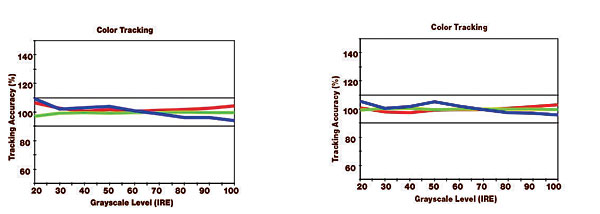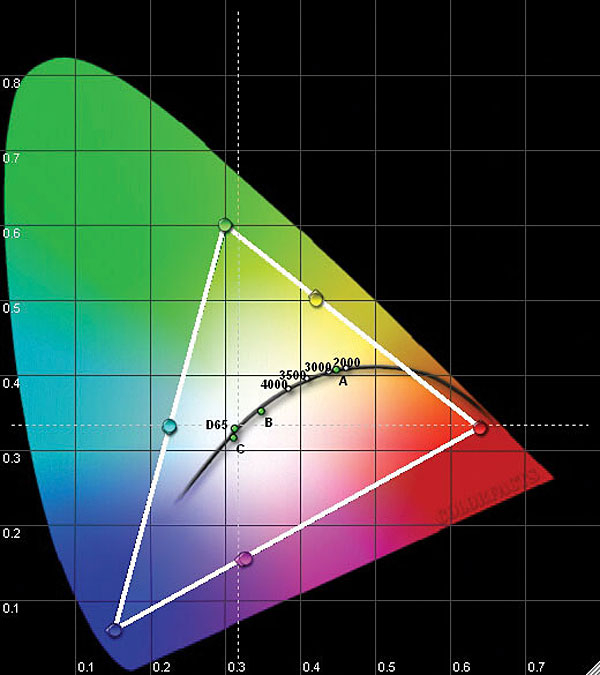Panasonic TC-P50ST30 3D Plasma HDTV HT Labs Measures
Full-On/Full-Off Contrast Ratio: 3,118:1
All of the measurements here, unless noted otherwise, were taken in the Cinema or THX Picture mode, in 2D, through an HDMI input, and with the set adjusted as needed for the most accurate image in a darkened room.
Delta E, a number referenced in the following discussions, is a figure of merit that indicates how close a display’s color tracking comes to producing an ideal white balance (a specific 6500K point on the CIE color chart known as D65 or D6500). The lower the Delta E number, the better. Ideally, the Delta E will be identical at every brightness level, but in practice, it always varies. Experts generally agree that levels below 3 or 4 indicate a result that is visibly indistinguishable from perfect color tracking.

The full-on/full-off contrast ratio was determined from a measured peak white level of 24.14 foot-lamberts and a black level of 0.008 ft-L—the latter a virtual tie with the GT30. Before calibration, the TC-P50ST30’s gray scale in the Cinema mode produced decent but unspectacular results. The Delta E values ranged between 0.86 and 4.15 from 30 IRE to 90 IRE but jumped to 10.37 at 20 IRE and 6.44 at 100 IRE. After calibration, they were below 3.0 at every point except 20 IRE (5.34), 50 IRE (4.9), and 100 IRE (4.46).

The TC-P50ST30’s Cinema mode gamma averaged 2.17, very close to the desired value of 2.2.The TC-P50ST30 was calibrated for 3D in the Custom mode. This produced a good result (not shown), although the color tracking wasn’t as tight as in the VT30 (the latter has a 10-step calibration adjustment in the Custom mode; the TC-P50ST30 has only high/low controls). The 3D-calibrated Delta E values ranged from 0.58 to 4.0 from 20 IRE to 70 IRE but jumped to 5.72 and 5.66 at 80 IRE and 90 IRE, respectively. The TC-P50ST30’s Custom mode gamma was slightly higher than that of the VT30 and comparably peculiar, but also effective for 3D.—TJN













































